Do your peaches have a gummy, sticky, clear dab on them as if someone put a touch of glue from a hot glue gun on the peach? If you answered “yes”, you’ve got a problem with the Oriental fruit moth or Grapholita molesta. It’s the number one pest that plagues peaches, and it can ruin your peach harvest. Here’s what to do about Oriental fruit moth on peaches.
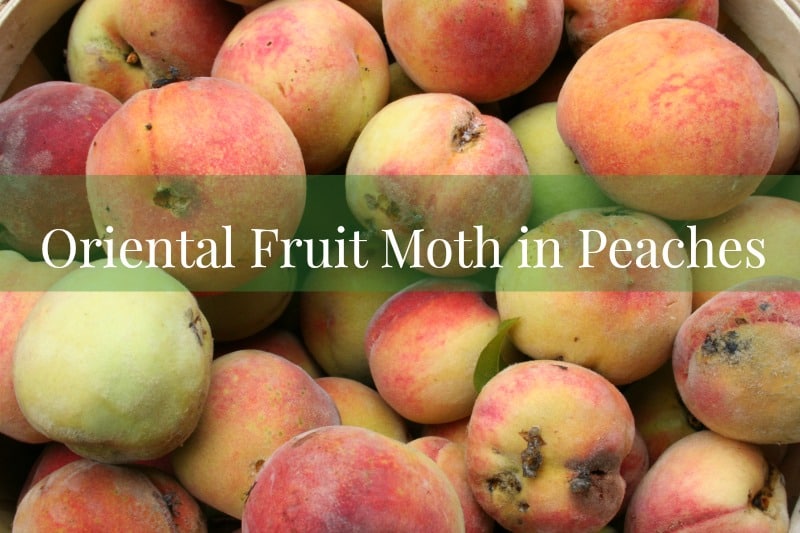
Oriental Fruit Moth in Peaches
I first noticed the sticky bits many years ago, perhaps on the first peaches that developed on our trees. I asked a friend about them, and she said it was common around here in Virginia and that the peaches were fine to eat. I just cut out the bad bits, washed off the gummy stuff, and canned the peaches with no problem.
When another friend found she experienced the same problems with her peach tree, I decided to go on the hunt for the cause – and the solution – to the gummy goo on peaches.
What is it? It’s same produced when the pupa or the Oriental fruit moth, or Grapholita molesta, emerges from the fruit after feasting on it (and potentially ruining your crop).
The Oriental fruit moth is a small moth, just about a quarter of an inch long. It’s gray, nondescript, and mostly flies at night between dusk and dawn, so you’re unlikely to run into them in the garden.
The adults find host trees to lay eggs. The eggs then turn into larva, which can feed on the tips of fruit trees. When they pupate, the pupa burrow into the developing fruit from the stem end. They hang out near the pit, munching on the young fruit. When they’re ready to leave, they exit the fruit and leave that telltale gummy spot.
Here’s what it looks like. The arrow points right to the spot. These peaches were harvest from my orchard this year.

See the little hole? Well, hello pupa of the Oriental fruit moth. Hope you enjoyed your peach.
How to Prevent Oriental Fruit Moth in Peaches
Preventing your peach crop from being ruined by these darned bugs takes a multi-step approach.
- Clean up your orchard in the fall. Rake the leaves up and look at the branches of the trees for eggs. Remove them immediately.
- Spray, if you use fruit tree sprays, to kill eggs and larva.
- Use pheromone traps to lure the adults away from the orchard.
My friend was right – you can still eat the fruit if it’s intact. Many of our peaches turned brown and shriveled, falling to the ground. Others had big rotten spots inside. I had to cut each spot out during the preparation time before canning so that only the ripe, clean flesh of the peach was left. It was time-consuming.
We didn’t spray our orchard this year because the crazy weather kept us guessing when the trees were going to break dormancy. It seems as if the Oriental fruit moths got a jump on us this year and really had a feast on our peaches. I still managed to can 9 pints and make a killer cobbler (recipe to come on Friday!) so it was still okay. If we grew peaches for a living, we’d have a bigger problem, but when they’re just for our own enjoyment, we can forgive a little lapse.
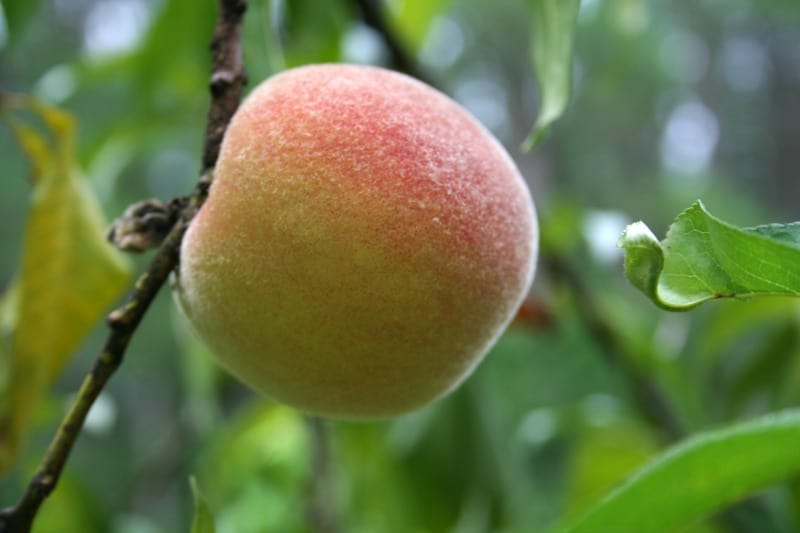
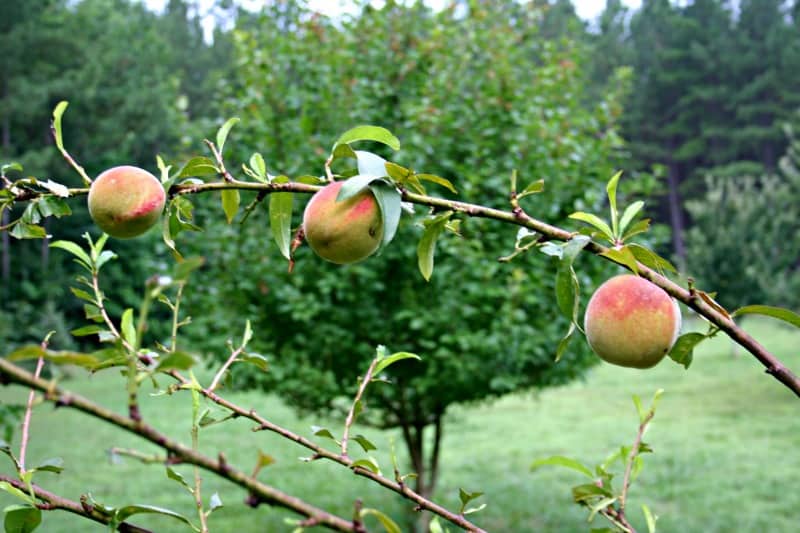
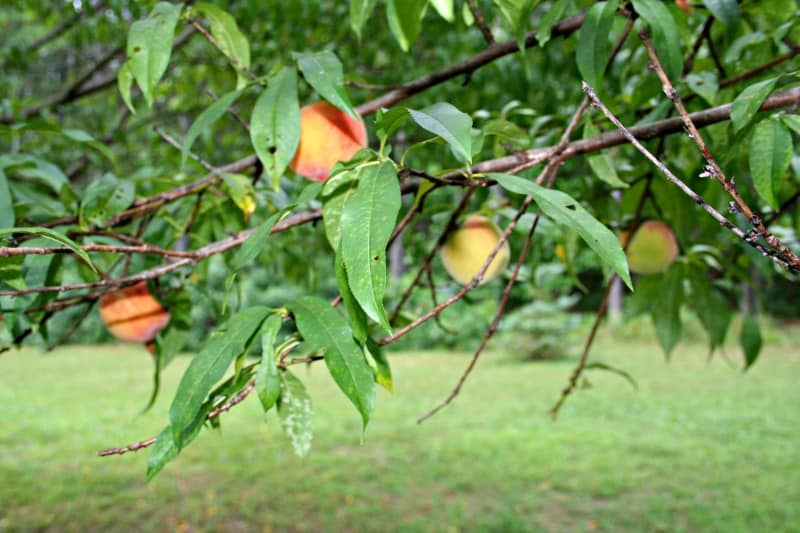
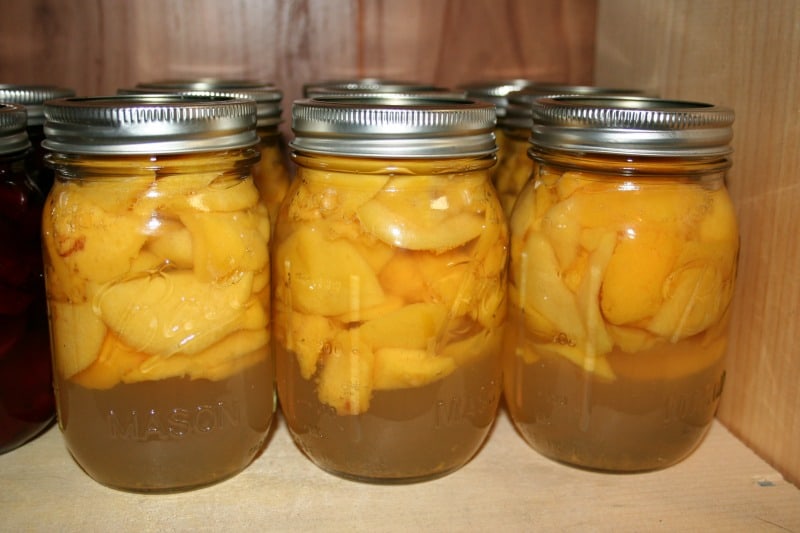



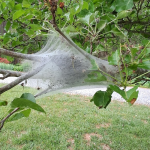
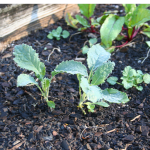
Wow, thank you for this post! We just moved into a house with a peach tree and I noticed something was eating the peaches. I thought it was birds. I was harvesting them earlier before anything else could get to them but then I noticed the clear “sap” and got a bit concerned about eating them. I sliced away that part and cut the peach into pieces, inspecting for damage…If I’m not canning or baking them, are they still alright to eat fresh, so long as they don’t appear damaged in any way?
Thanks!
Yes they are fine to eat! Enjoy!